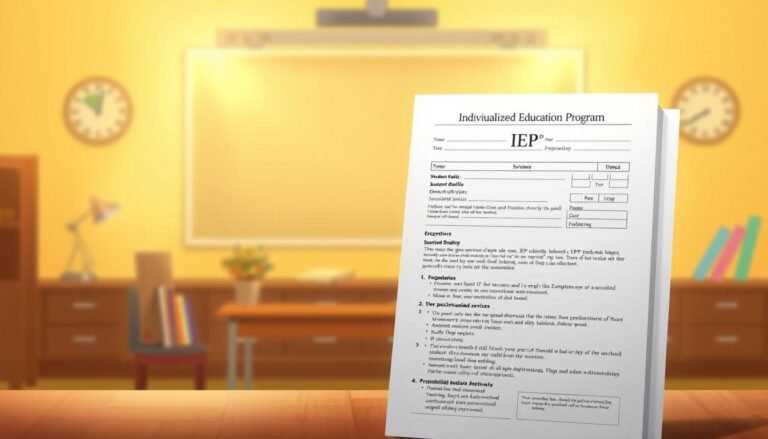
From Concern to Clarity: Essential Strategies for Parents Managing Anxiety and Learning Disabilities
Introduction
Navigating the landscape of anxiety and learning disabilities can often feel like traversing a turbulent sea without a map. For many parents, the initial concern about their child’s well-being can quickly spiral into overwhelming fear and confusion. However, transforming this concern into clarity is not just a hopeful sentiment—it’s a necessary journey that every parent can embark on. This article, From Concern to Clarity: Strategies for Parents Managing Anxiety and Learning Disabilities, aims to provide you with actionable insights, case studies, and methods that can help you support your child more effectively.
Understanding Anxiety and Learning Disabilities
What Are Learning Disabilities?
Learning disabilities (LD) are neurological conditions that affect a person’s ability to receive, process, or communicate information. Common types include dyslexia, dyscalculia, and ADHD. Children with learning disabilities often struggle in traditional educational settings but can excel in alternative environments that recognize and cultivate their strengths.
The Role of Anxiety
Anxiety is more than just occasional worry—it’s a persistent state that can severely impact a child’s ability to thrive academically and socially. According to the National Institute of Mental Health, anxiety disorders affect nearly 31% of adolescents, which can co-occur with learning disabilities, creating a compounded challenge for both children and their parents.
The Link Between Anxiety and Learning Disabilities
Many children with learning disabilities experience heightened levels of anxiety related to their academic struggles. This anxiety might manifest as fear of failure, difficulty in social situations, and even physical symptoms like stomachaches or headaches. Recognizing this intersection is vital for effectively addressing both concerns.
Step 1: Acknowledge Your Concerns
The first step in transforming concern into clarity is to acknowledge your feelings. As a parent, it is entirely normal to feel overwhelmed or lost when faced with your child’s struggles. Here’s how you can start to reframe your mindset:
Case Study: Emma’s Journey
Emma, a 10-year-old diagnosed with dyslexia and generalized anxiety disorder, often found herself in tears during homework time. Her mother, feeling helpless and concerned, sought strategies to help her. One step was acknowledging her fears and frustrations, allowing herself to seek help and support rather than remaining isolated with her worries.
Analysis
Emma’s story highlights the importance of emotional honesty. When parents recognize and accept their worries, they can begin to seek solutions rather than become paralyzed by them. This recognition is the groundwork for the next steps in this journey.
Step 2: Seek Professional Guidance
Importance of Expert Opinions
Consulting with educational psychologists or child therapists can provide invaluable insights into effective strategies tailored to your child’s needs. Professionals can help identify specific learning disabilities and anxiety impacts, guiding you toward evidence-based interventions.
Case Study: Liam’s Diagnosis
Following a referral to an educational psychologist, Liam, who was struggling with attention issues and anxiety, received a comprehensive evaluation. The resulting plan included accommodations for his learning disability and strategies to manage anxiety, improving his academic performance and self-esteem.
Analysis
Liam’s experience underscores the significance of professional input. Parents often feel lost and unsure of how to help. Expert evaluations provide clarity, enabling them to move forward with targeted strategies tailored to their child’s unique challenges.
Step 3: Build a Supportive Environment
Creating a supportive home environment can significantly alleviate both anxiety and the impact of learning disabilities.
Consistency is Key
Having a structured routine helps children know what to expect, reducing anxiety. Incorporating gentle reminders and visual schedules can make the daily routine predictable and manageable.
Case Study: Sarah’s Strategy
Sarah’s family adopted a visual schedule at home that mapped out her daily activities. With this structure in place, Sarah—a 12-year-old with ADHD—reported feeling less anxious about managing her time and tasks.
Analysis
The success of Sarah’s approach reinforces the importance of routine and predictability in a child’s life. Such adaptations help children feel more secure, allowing them to concentrate on their learning without the burden of uncertainty weighing on their shoulders.
Step 4: Open Communication
Encouraging open communication is crucial for building trust and understanding between parents and children.
Active Listening
Practice active listening—validate and acknowledge your child’s feelings without immediately offering solutions. This approach fosters a sense of safety and can encourage them to share their struggles.
Case Study: Ben’s Dialogue
Ben, a 9-year-old with dysgraphia, often felt frustrated with writing assignments. After his father started a weekly check-in where Ben could freely express his frustrations, their relationship improved. Ben felt heard and supported, leading to increased self-confidence.
Analysis
Ben’s experience illustrates the transformative power of communication. Active listening fosters a safe space where children can express their fears, leading to increased emotional resilience and problem-solving skills.
Step 5: Implement Coping Strategies
Use practical coping strategies to help your child manage anxiety more effectively.
Mindfulness and Relaxation Techniques
Introduce mindfulness practices such as deep breathing, yoga, or guided meditation—these techniques can be incredibly beneficial for reducing anxiety levels.
Case Study: Mia’s Mindful Journey
Mia, a teenager with generalized anxiety disorder, started practicing mindfulness techniques at home. Her mother reported that Mia gradually became more comfortable with stressful situations, such as exams or social gatherings, leading to noticeable improvements in her anxiety levels.
Analysis
Mia’s journey highlights the effectiveness of mindfulness as a coping mechanism. These tools can empower children to face their anxieties head-on, fostering a sense of control over their emotional state.
Step 6: Foster Advocacy Skills
Empowering your child to advocate for themselves can be a game-changer.
Teaching Self-Advocacy
Incorporate discussions about strengths and weaknesses, encouraging your child to understand their learning needs. Engage them in conversations about their supports at school—knowledge is power.
Case Study: Tom’s Empowerment
Tom, a 15-year-old with ADHD, learned to voice his needs during an IEP meeting at school. With guidance, he effectively communicated his challenges and requested necessary accommodations, leading to a more supportive educational environment.
Analysis
Tom’s experience speaks to the importance of fostering self-advocacy skills. When children learn to articulate their needs, they develop confidence and autonomy, essential traits for navigating both academic and social landscapes.
Step 7: Collaborate with Educators
Establishing a collaborative relationship with your child’s educators can significantly enhance their support system.
Open Dialogue with Teachers
Engage in regular communication with teachers to monitor your child’s progress and discuss effective strategies to accommodate their learning needs. Share insights regarding their anxiety and learning disability to tailor educational approaches further.
Case Study: Ava’s School Collaboration
When Ava’s mother communicated Ava’s anxiety and dyslexia to her teachers, they implemented targeted interventions. Regular check-ins and adapted assignments allowed Ava to progress academically while managing her anxiety.
Analysis
Ava’s story demonstrates the power of collaboration between home and school. By working together, parents and educators can create a holistic support system, providing children with the resources they need to thrive.
Step 8: Celebrate Achievements
Highlighting and celebrating successes—no matter how small—can boost self-esteem and motivation.
Acknowledgment
Create a family ritual for acknowledging achievements, whether it’s finishing a project, managing a stressful situation, or even putting forth effort.
Case Study: Jake’s Milestones
Jake, a high-schooler with learning disabilities, celebrated every milestone with his family, from completing a challenging assignment to overcoming social anxiety during a school dance. Ultimately, these celebrations bolstered his self-esteem and encouraged him to tackle new challenges.
Analysis
Jake’s experience reinforces the significance of recognition and positivity. Celebrating small victories can instill confidence in children, motivating them to confront challenges and pursue further accomplishments.
Conclusion
Navigating the world of anxiety and learning disabilities can feel daunting, but it doesn’t have to remain a source of fear. By implementing the strategies outlined in From Concern to Clarity: Strategies for Parents Managing Anxiety and Learning Disabilities, parents can take meaningful steps toward building a supportive and empowering environment for their children.
The journey from concern to clarity is not merely a transition; it’s a pathway filled with insights, emotional growth, and the promise of better days ahead. Remember, you possess the tools to help your child thrive.
FAQs
1. What is the first step to take if I suspect my child has a learning disability?
Start by observing their learning patterns, noting specific challenges. Consult with their teacher and consider seeking a professional evaluation for a definitive diagnosis.
2. What are some signs of anxiety in children?
Common signs include excessive worry, avoidance of situations, physical symptoms (like stomachaches), and behavioral changes (such as withdrawing from activities).
3. How can I support my child during homework time?
Create a distraction-free workspace, establish a routine, and offer praise for effort rather than performance to help alleviate pressure.
4. Can diet affect my child’s anxiety levels?
Yes, a balanced diet can contribute to overall well-being. Certain nutrients—like omega-3 fatty acids—are linked to improved cognitive function and mood stabilization.
5. Is it beneficial for children with learning disabilities to have accommodations in school?
Absolutely! Appropriate accommodations can help level the playing field for children with learning disabilities, allowing them to demonstrate their true potential without being hindered by their challenges.
By applying these strategies, parents can transform their concerns into clarity, creating a nurturing environment that facilitates growth, resilience, and success for their children facing anxiety and learning disabilities.
















